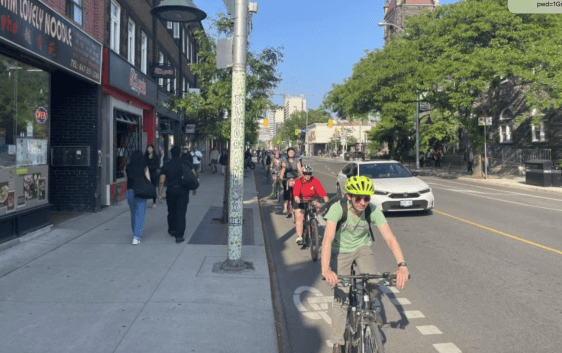Today on the Streetsblog Network, we return to the question of connectivity -- or, to translate it out of transpo jargon, how to get there from here.
The Transport Politic
looks at one of the objections to high-speed rail: that people won't
want to ride it because when they arrive at their destination, transit
connections are insufficient or entirely absent. He points out that if
you make the comparison to airports, even transit-impaired downtown
rail stations have an advantage:
Meridian,
Mississippi, has invested heavily in its downtown rail station, and is
hoping high-speed trains will bring more business to its walkable
downtown. Photo by Sarah Goodyear.Do commuters need good transit at stations to be attracted
to riding intercity trains? Few U.S. airports have efficient transit
connections, and even those that do typically see few of their
customers arriving by train or bus. Yet people who want to fly make it
to the airport by car.…More important, though, is the fact that many high-speed rail users,
especially businesspeople, will be aiming their travel towards a
destination within walking distance or a short taxi ride of
the station. Unlike airports, which are by definition completely
inaccessible by pedestrians, train stations can be positioned
underneath major cities and provide direct access to the job centers.
Unlike automobilists, who encounter congestion and high parking fees
downtown, train users get reliable, non-stop connections into the focal
points of major cities.Rail
opponents frequently like to point out that sprawl has reshaped
the American landscape to such an extent that they argue it would be
ineffective to focus the benefits of train travel at the center of
town. But they usually neglect to mention the fact that in almost all
metropolitan areas, the single largest employment zone remains downtown
-- and it is usually the only walkable one. Similarly, for better or
worse, U.S. cities from coast to coast have invested massively in new
convention centers, sports arenas, museums, parks, and entertainment
corridors over the past three decades — and the vast majority of that
spending has been downtown, near centrally positioned train stations.
For businesspeople and tourists, there will be a significant incentive
to choose rail over air or automobile travel for convenience’s sake.
This post reminded me of my trip last spring
to Meridian, Mississippi, where the city's then-mayor, John Robert
Smith, showed me around the downtown. Since the rebuilding of
Meridian's historic train station as a multi-modal transit center
(Greyhound and taxis also use it as a hub), the eminently walkable
downtown area has been cleaned up and revitalized. Smith hopes that
Meridian, which is an important regional commercial hub, will be a stop
on the high-speed corridor between Atlanta and New Orleans.
More from the network: Bike Portland has an in-depth look at one of the city's bike boulevard projects. The City Fix reports on China's tightening grip on the minerals necessary to make hybrid cars like the Prius. And MetroRider LA wraps up its excellent series on ten top transportation and planning blogs.




